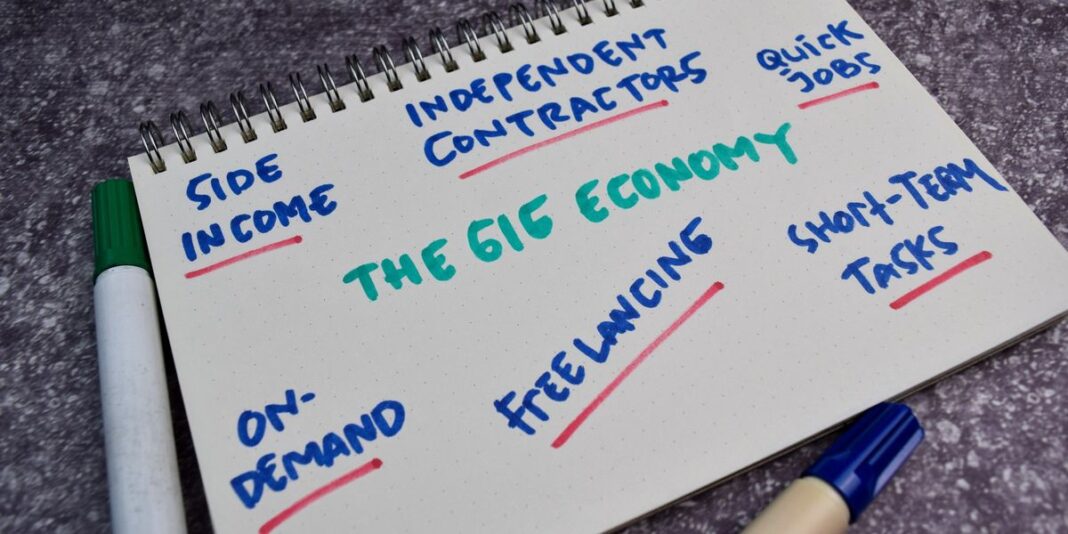Roughly one in 10 American workers are self-employed, and roughly one in 3 perform some type of independent work, whether that is full-time or part-time employment or a side hustle alongside a traditional job.
These figures may be even higher in Georgia. A 2022 self-employment report highlighted Atlanta and Gainesville, Georgia, as having some of the highest percentages of self-employed workers of any large and small cities, respectively. Moreover, the Associated Builders and Contractors ranked Georgia the No. 1 state for construction in 2023, and construction has one of the highest — and rising — percentages of independent contractors.
America already has too few people working. If the employment rate were the same as it was before the COVID-19 pandemic, 2.9 million more people would be working today.
Workers of all types want to know which policymakers offer a better platform for workers’ prosperity. While both parties and virtually all politicians assert pro-worker stances, their approaches to “helping” workers look nothing alike. In particular, progressives say they want to help all workers, but in reality, their policies pick winners and losers instead.
Take the Biden-Harris administration’s efforts to diminish self-employment and force virtually all workers into traditional 9-to-5 jobs, which include reporting to a boss and being subject to thousands of pages of labor and employment laws.
In particular, a new Biden-Harris regulation would make it illegal for companies to do business with many independent contractors, freelancers, and gig workers.
This regulation mirrors a law in Harris’ home state of California, AB 5, which has proven deeply unpopular. Minnesota Governor Tim Walz (D) also supports moving more people out of independent work and into big corporations. He signed into law severe punitive penalties for employers who — whether intentionally or by mistake — misclassify employees. The law also imposes excessive restrictions, including a 14-factor test, on independent contractors in the construction industry.
The full consequences of these laws are still unfolding, but they are likely to be severe. In 2023, about 64 million Americans engaged in independent work, whether full-time, part-time, as gig workers, or through side hustles. These independent workers aren’t limited to just accountants or Uber drivers — they include IT consultants, makeup artists, babysitters, musicians, interpreters, fitness instructors, copy editors, and truck drivers, to name a few.
Independent workers say it provides better work-life balance, the same or higher income, and flexibility that leads to less stress and better health. In fact, nearly half of independent workers say that no amount of money would cause them to go back to traditional employment.
Many people — especially parents, caregivers, and individuals with health conditions — want or need flexible jobs, and this rule will take them away. Half of the people who perform independent work say that they are unable to work for a traditional employer because of their personal circumstances.
AB 5 in California has wreaked havoc on more than 600 professions, with hundreds of workers sharing how they’ve been harmed. The law is so unpopular that lawmakers have granted more than 100 exemptions and voters passed a referendum exempting ridesharing companies from the statute.
The law continues to restrict employment and incomes in the state. Researchers found that AB 5 slashed self-employment by 10.5% in California. Instead of achieving lawmakers’ intended goal of pushing more workers into formal jobs, the law led to a 4.4% decline in total employment.
Beyond hurting workers who want and need flexibility, restrictions on independent contractors also harm small businesses. In a 2021 poll, 62% of small- and medium-sized businesses said their company’s success depended on independent contractors or that running a profitable business would be much harder without them.
Small businesses rely on independent contractors to help them grow and compete with larger companies. On average, small businesses with four or fewer employees use 6.7 contractors.
America already has too few people working. If the employment rate were the same as it was before the COVID-19 pandemic, 2.9 million more people would be working today. The last thing Americans need is another regulation that makes it harder to make a living and to afford the rising cost of living.
Although the Biden-Harris regulation has only been in effect since March, and it’s too early to fully study its effects, the employment-to-population ratio dropped by 0.3 percentage points between March and July. This decline represents a loss of 700,000 workers.
If the next administration continues to push similar policies, Georgians will likely be among the Americans who suffer the most.




